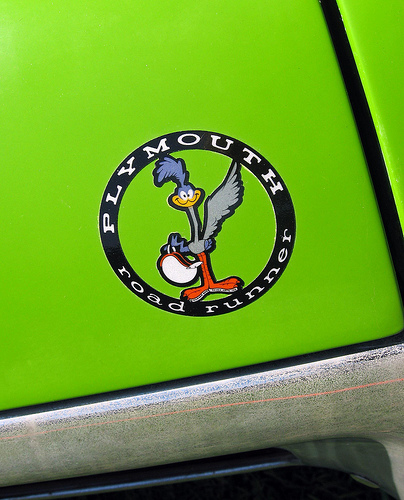Originally a flashy, limited-edition image leader, by 1961, the Plymouth Fury had become a bread-and-butter big car, the mainstay of the line. Starting in 1962, it began a bizarre odyssey, going from small to large and back to small again. This week, we take a look at the strange incarnations of Plymouth’s big cars in the sixties and seventies, including the Plymouth VIP, a short-lived luxury version that the ads once dubbed the “Very Important Plymouth.”

Continue Reading Plymouths Great and Small: The Plymouth VIP and Fury
Tag: Plymouth
Everybody’s Kid Brother: Chrysler’s Compact Valiant
Advertised as “Nobody’s Kid Brother,” Chrysler’s compact Valiant was originally intended to be its own marque. The story of how it became the Plymouth Valiant is a complicated one, going back to the origins of the Plymouth brand and its relationship with other Chrysler divisions. This is the story of the original Valiant, its little-known Dodge twin, the Lancer, and the long and contentious relationship between Plymouth and its sister divisions.

Continue Reading Everybody’s Kid Brother: Chrysler’s Compact Valiant
The Dodge That (Almost) Ate Detroit: Chrysler’s Disastrous 1962 Downsizing
Making cars smaller (downsizing) can pay huge dividends in improved performance, better fuel economy, and lower emissions — but if the public doesn’t accept it, it can cost you dearly. To understand why Detroit has always been afraid of smaller cars, we need look no further than Chrysler’s ill-fated 1962 Dodge and Plymouth — Detroit’s first downsizing disaster (albeit one with an unexpected silver lining).

Continue Reading The Dodge That (Almost) Ate Detroit: Chrysler’s Disastrous 1962 Downsizing
Falling Empires Part 2: The Road Back
In 1981, Chrysler had $1.2 billion in federally backed loans and an array of new products. Problem solved? Not exactly. In this second installment of our series on the Chrysler bailout, we examine the corporation’s rocky road back to solvency — and how it ended up on the ropes again less than a decade later.
Great Red Shark: The 1960 Dodge Polara D-500
In Hunter S. Thompson’s 1971 novel Fear and Loathing in Las Vegas, the narrator, Raoul Duke, and his attorney, Doctor Gonzo, set out from Los Angeles to Las Vegas in a rented red convertible they dub the Great Red Shark, blazing across the desert, hopped up on enough controlled substances to fill a shopping cart, in search of the American Dream. The novel’s Great Red Shark was a Chevrolet, not a Dodge, but there would be few better choices for a fast run from L.A. to Las Vegas than this week’s subject: the rare and rocket-like 1960 Dodge Polara D-500.

Continue Reading Great Red Shark: The 1960 Dodge Polara D-500
Beep Beep: The Irreverent Plymouth Road Runner
Performance car enthusiasts tend to be a somewhat humorless bunch, whether you’re talking about Ferraristes, old-school muscle car fans, or import tuners. If they have one thing in common, it’s that they’re none too keen at being laughed at. That’s why it’s remarkable that one of the premier icons of the muscle car era is one of the most irreverent of them all: a budget Supercar named after a cartoon bird — the Plymouth Road Runner. This is its story.

Continue Reading Beep Beep: The Irreverent Plymouth Road Runner
Fish Story: The Plymouth Barracuda (Part Two)
When we last saw the Plymouth Barracuda, its second generation had floundered (if you’ll excuse the expression) in its efforts to challenge the popular Ford Mustang, ranking near the bottom of the “pony car” sales race despite more attractive styling and stronger engines. Troubled but undaunted, Plymouth took a third swing, with results that surprised even them. Here’s the story of Plymouth’s 1970-1974 E-body Barracuda and Plymouth Duster.

Continue Reading Fish Story: The Plymouth Barracuda (Part Two)
Fish Story: The Plymouth Barracuda (Part One)
If you ask the average person to name an American sporty car of the late sixties, you probably won’t hear “Plymouth Barracuda” unless the person is a dedicated Mopar fan. In a way, that’s curious, because the Barracuda was the first of the so-called pony cars to hit the market (even before the Ford Mustang) and in some areas it was arguably superior to its Ford rival. So, why was the Barracuda doomed to be a perennial also-ran? This is the sad story of the 1964-1969 Plymouth Barracuda.

Continue Reading Fish Story: The Plymouth Barracuda (Part One)
Mean Machine: The 1970-1974 Dodge Challenger
Successful car design is as much a matter of prognostication as engineering skill or styling acumen. To be successful, a design has to take into account not only where the market is now, but where it’s going to be three years from now. If you show up late to the dance, it may not matter how stylishly you’re dressed or how clever your moves may be. Dodge learned that the hard way in the early 1970s when it made its belated entry into the “pony car” market: the formidable but ill-fated 1970–1974 Dodge Challenger.

Continue Reading Mean Machine: The 1970-1974 Dodge Challenger
Dodging the Issue: Dodge’s 1966-1967 Fastback Charger
Thanks to The Dukes of Hazzard, most Americans are familiar with the sleek, late-sixties Dodge Charger, but the General Lee was actually the second generation of Dodge’s sporty car; the first was the original Coronet-based fastback Charger, a peculiar-looking car born of desperation and bitter sibling rivalry. This is the story of the 1966-1967 Dodge Charger.

Continue Reading Dodging the Issue: Dodge’s 1966-1967 Fastback Charger

